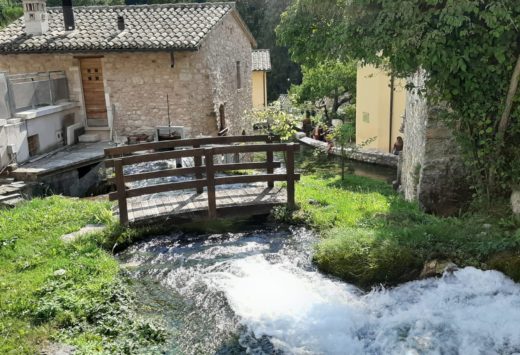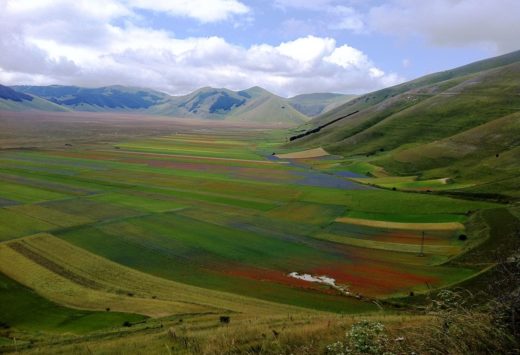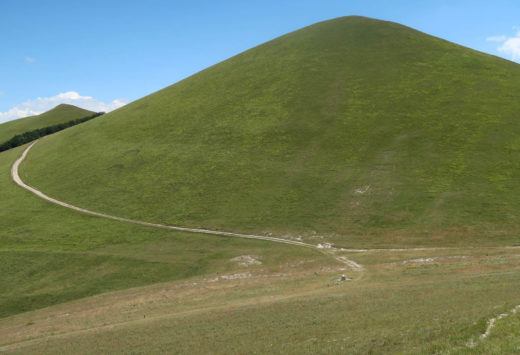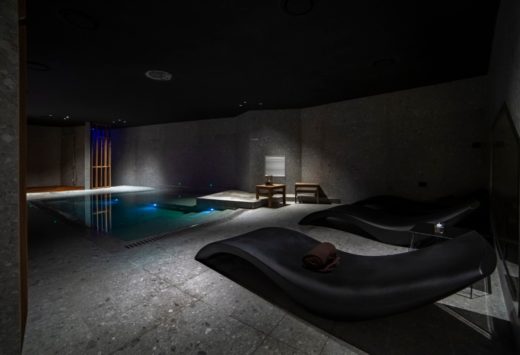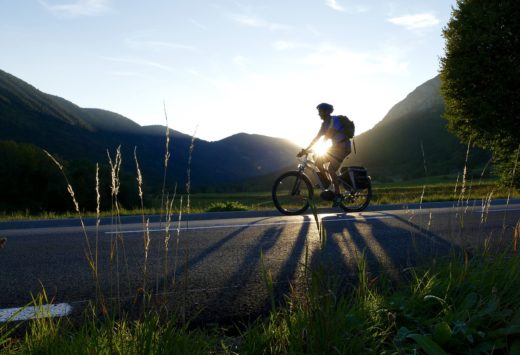Discover Preci with us
Nestled among the lush green woods of the Castoriana valley, with its streams of clear running water and white limestone rock formations, stands the small medieval village of Preci, perched on a hill at some 956 metres above sea level.
The first documented traces of Preci date back to 1232, the year in which the inhabited centre consisted of a small number of houses grouped around a Benedictine oratory, which lends its name to the village: from the Latin word ‘preces’ meaning prayer. Shortly after its foundation, a protective wall was built around the small settlement and the ancient portal, the arco di Finocchioli, is still visible today. For a few years, Preci remained under the jurisdiction of the city of Spoleto and then passed under the control of Norcia in 1276. The inhabitants of the small village can’t have been very happy under Norcia’s rule because the village was destroyed by the Norcian army in 1528 after a revolt. The rebels were barred from the city and forced into exile at Castelluccio. Just a few years later, via the intercession of Pope Paul III, Preci was rebuilt in 1533, after official reconciliation with Norcia. From that moment on, the small village experienced a period of prosperity and growth, until 1817 when it was elevated to the rank of municipality in the papal state under Pope Pius VIII.
Although it is a small urban outpost in the vast expanse of the Parco dei Monti Sibillini (Park of the Sibillini Mountains), Preci owes its worldwide fame to the Scuola Chirurgica (Surgical School) that was founded here and developed for about four hundred years (from 12th-16th centuries). The surrounding vegetation, which is rich in medicinal plants, was exploited from ancient times onwards by the hermit-monks who settled in the valley, the most famous being Sant’Eutizio. The Abbey dedicated to his memory is near Preci, which was the cradle of surgical expertise in the area. In 1215 the Lateran Council forbade the monks from devoting themselves to the surgical practices in which they excelled, so the monks who were custodians of a unique branch of knowledge and expertise handed down over many centuries, decided to transmit all their knowledge to the inhabitants of the nearby villages. Figures such as Durante and Cesare Scacchi and Orazio Cattani provided their professional services not only in Umbria but throughout the whole of Italy and even beyond Italy’s borders (Cesare cured the cataracts of the English Queen, Elizabeth of Tudor, and Orazio was the doctor at the court of the Sultan of Constantinople). The expertise of Preci’s surgeons was focused essentially in three fields: the removal of cataracts, inguinal hernias and kidney stones, the latter with a 90% success rate. The historical events related to the Surgical School and numerous medical instruments are now on display at the Abbey’s museum, one of the area’s unmissable highlights.
So, while Preci is a small outpost in the Apennines, it’s an important resource not only for Umbria but for the whole of Italy. The international fame of its surgeons and the devotion of its hermit-monks attract numerous tourists and devoted pilgrims every year.
Alongside prayer, museums, nature and history, as in the case of almost any rural village in Umbria, Preci offers all the genuine, delicious local specialities you’d expect. The cuisine’s main attractions are its trout and ham. If you’re in the area between late June and early July, don’t miss ‘Pane, prosciutto and Fantasia’ (Bread, ham and ‘whatever-you-fancy’), an event that fills the village streets with stands offering typical local and Umbrian foodstuffs and displays of traditional handicrafts: from cheese and bread-making to pork-processing, basket weaving and blacksmithing.



